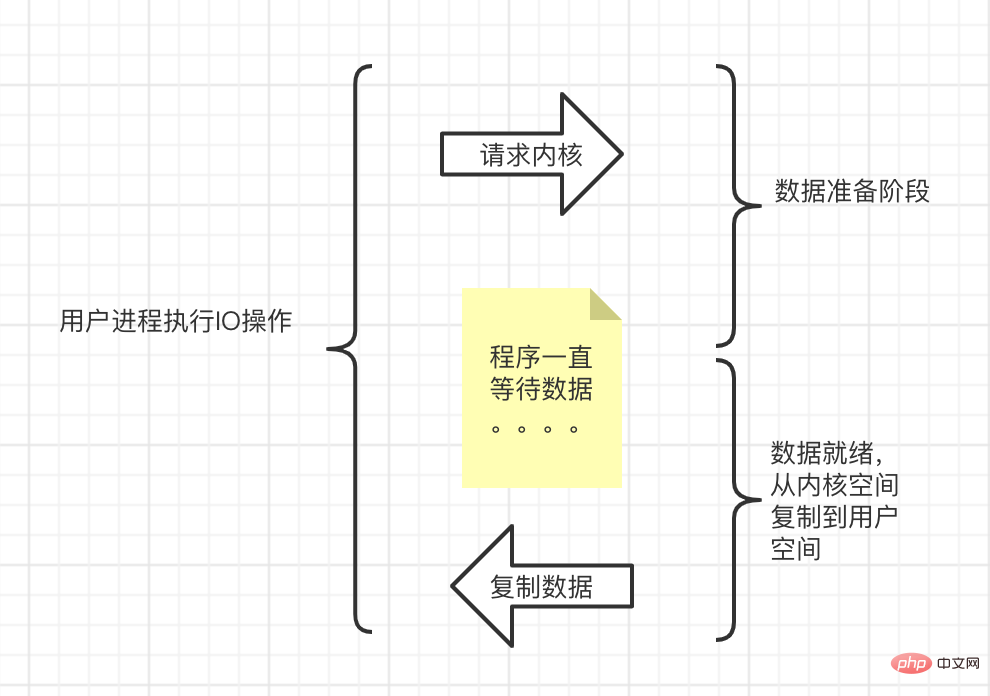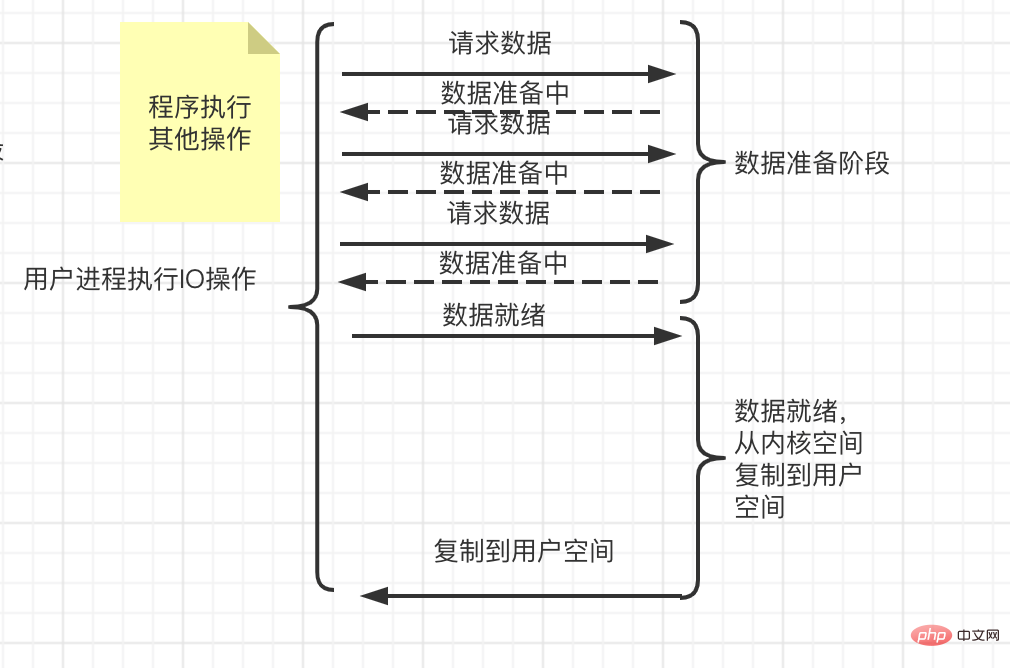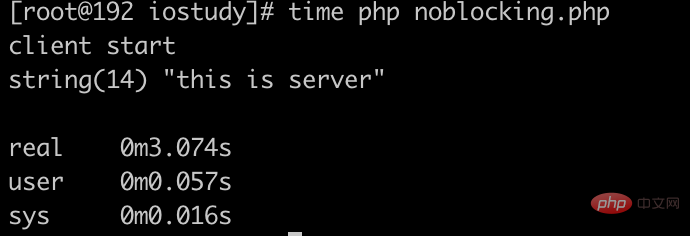
This article will give you a detailed introduction to the blocking and non-blocking of PHP's five major IO models. It has certain reference value. Friends in need can refer to it. I hope it will be helpful to everyone.

Blocking: It means that the application needs to complete the IO operation before returning to the user space.
Non-blocking: It means that the application is blocked when performing the IO operation. A status value is returned to the user immediately after the call, without waiting for the IO operation to be completely completed.
Blocking model:

Non-blocking mode:

In blocking mode, the user process will It keeps waiting for kernel state data, so the efficiency is extremely low. For example: when Xiao Ming wants to boil water, he has to wait for the water to boil. But in fact, Xiao Ming can do other things during the process of boiling water.
An optimization is non-blocking mode. After the user process performs an IO operation, the kernel state will immediately return a value, which is usually empty. The user process can do other things until the kernel state data is ready. Request to get the real execution results. Taking the example of Xiao Ming above, when Xiao Ming is boiling water, he can read a book, look for a while to see if the water is boiling, check whether the water is boiling, and at the same time he can read a book and study.
Performance analysis:
Suppose a program needs to perform two operations a and b, where a needs to perform IO operations and b does not. In blocking mode, the time consumed is equal to a b, while in non-blocking mode, it is equal to the maximum time consuming operation in a and b.
Server code:
$server = stream_socket_server('tcp://127.0.0.1:9999', $erron, $error); while (true) { $conn = stream_socket_accept($server); if ($conn) { $data = fread($conn, 65535); echo $data; sleep(3); fwrite($conn, 'this is server'); fclose($conn); } }
Blocking client:
function operation() { sleep(2); } echo "client start n"; $client = stream_socket_client('tcp://127.0.0.1:9999', $erron, $error, 60); fwrite($client, "is client 1n"); echo fread($client, 65535); operation(); fclose($client);
Non-blocking client:
function operation() { sleep(2); } echo "client start n"; $client = stream_socket_client('tcp://127.0.0.1:9999', $erron, $error, 60); stream_set_blocking($client, 0);//设置非阻塞 fwrite($client, "is client 1n"); operation(); while (!feof($client)) { sleep(1); var_dump(fread($client, 65535)); } fclose($client);
Time consumption:
Blocking Mode

Non-blocking mode

Recommended learning:php video tutorial
The above is the detailed content of Detailed introduction to PHP's five IO models: blocking and non-blocking. For more information, please follow other related articles on the PHP Chinese website!




